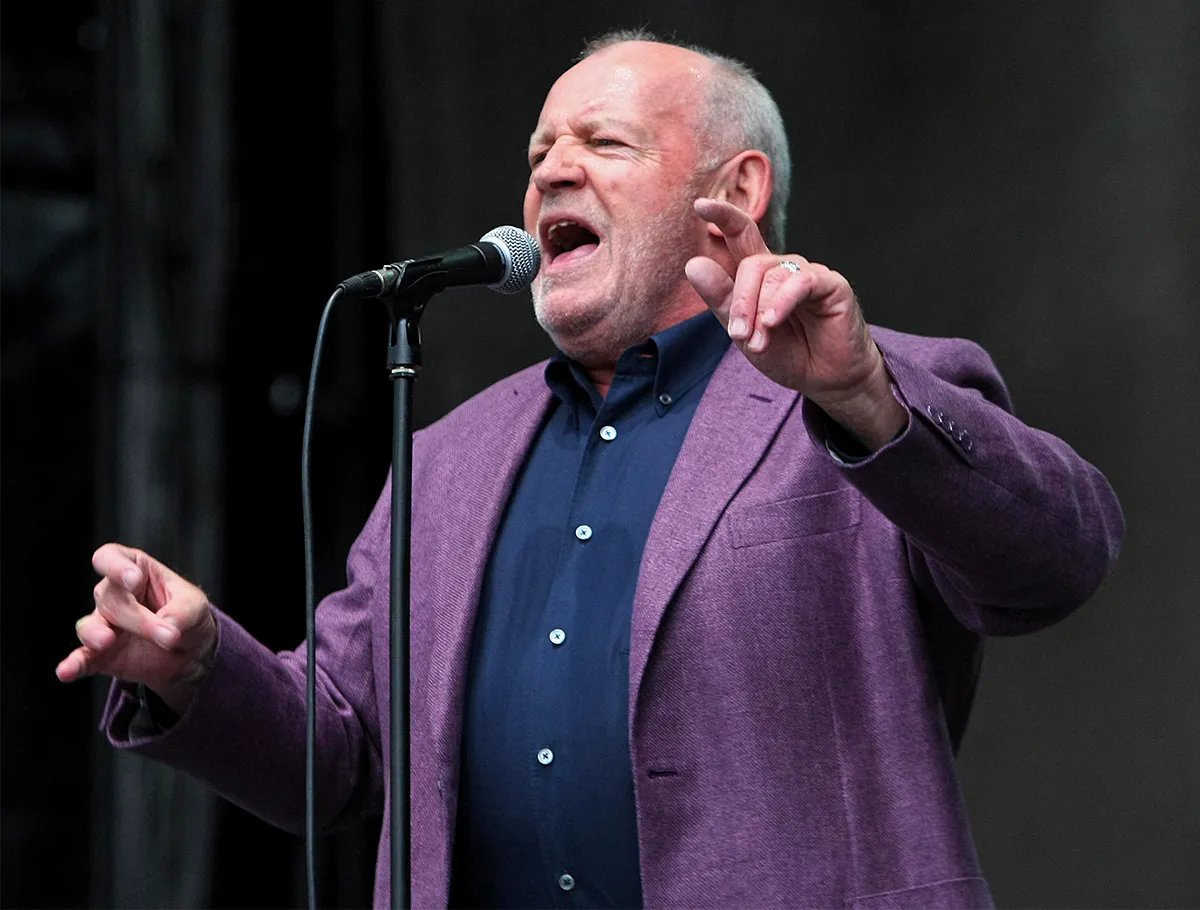The Hidden Brain Connections Between Our Hands and Tongues

James O’Brien for Quanta Magazine
Introduction
One day, while threading a needle to sew a button, I noticed that my tongue was sticking out. The same thing happened later, as I carefully cut out a photograph. Then another day, as I perched precariously on a ladder painting the window frame of my house, there it was again!
What’s going on here? I’m not deliberately protruding my tongue when I do these things, so why does it keep making appearances? After all, it’s not as if that versatile lingual muscle has anything to do with controlling my hands. Right?
Yet as I would learn, our tongue and hand movements are intimately interrelated at an unconscious level. This peculiar interaction’s deep evolutionary roots even help explain how our brain can function without conscious effort.
A common explanation for why we stick out our tongue when we perform precision hand movements is something called motor overflow. In theory, it can take so much cognitive effort to thread a needle (or perform other demanding fine motor skills) that our brain circuits get swamped and impinge on adjacent circuits, activating them inappropriately. It’s certainly true that motor overflow can happen after neural injury or in early childhood when we are learning to control our bodies. But I have too much respect for our brains to buy that “limited brain bandwidth” explanation. How, then, does this peculiar hand-mouth cross-talk really occur?
Tracing the neural anatomy of tongue and hand control to pinpoint where a short circuit might happen, we find first of all that the two are controlled by completely different nerves. This makes sense: A person who suffers a spinal cord injury that paralyzes their hands does not lose their ability to speak. That’s because the tongue is controlled by a cranial nerve, but the hands are controlled by spinal nerves.
These are fundamentally different kinds of nerves. Cranial nerves penetrate the skull through small openings, connecting directly to the brain. Each one carries out a specific sensory or motor function; the first cranial nerve, for example, conveys the sense of smell. The tongue is controlled by the 12th cranial nerve, called the hypoglossal nerve. In contrast, the muscles controlling our hand movements, like most other muscles in our body, receive instructions from nerves that reach out from our spinal cord, threading their way between our vertebrae. Sensory signals make the reverse journey. Clearly, any short-circuiting between tongue and hand-control circuitry must originate upstream of these two nerves, somewhere inside the brain itself.
Looking next at the neural wiring of the brain’s motor cortex, we see that the areas controlling the tongue are not adjacent to the region that controls fingers. The link between tongue and hands must therefore be someplace else in the brain, most likely in an area where complex neural circuits execute highly sophisticated functions. After all, one of the most sophisticated functions that humans can perform is speech — indeed, it seems to be unique to human beings. The next most sophisticated thing we can do is master the use of tools. Notably, in each of the different situations where my tongue was sticking out, I was using a tool: a needle, scissors or a paintbrush.
That connection is borne out by research showing that hand and mouth movements are tightly coordinated. In fact, that interplay often improves performance. Martial artists scream short explosive utterances, called kiai in karate, as they execute thrusting movements; tennis players often shout as they smack the ball. And research shows that coupling hand movements with specific mouth movements, often with vocalization, shortens the reaction time needed to do both. This neural coupling is so innate, we are usually oblivious to it, but we do this continually without awareness because the neural circuitry involved is in a region of the brain that operates automatically — it literally lies beneath brain regions providing conscious awareness.
Hand movements come in two general forms: Power grip movements involve opening and closing a fist, while precision hand movements involve delicate pinching between the thumb and index finger. These two types of hand movements, we’ve learned, are often accompanied by different tongue and mouth movements. Take, for instance, the movements made by the late rock singer Joe Cocker, who was famous for his wild arm and hand gestures during performances. In part, these were air guitar and piano pantomimes, but Cocker did not play either instrument, so they also likely reflected a natural connection between hand and mouth. He often displayed the power grip movement of an open fist when his tongue was retracted as he sang an open vowel like “aw.”

Joe Cocker’s open hand gesture accompanies his vocalization of “oh,” which withdraws the tongue into the mouth.
NTB/Alamy Stock Photo
At other times, Cocker’s tongue thrust forward as he sang the vowel sound “yee,” while his right hand (on the neck of his air guitar — he was left-handed) executed a precision movement, pinching his thumb and fingers as if he were picking up a tiny object or fingering a difficult chord.

Cocker executes a precision grip between thumb and fingers as he sings a syllable that thrusts his tongue forward.
Panther Media GmbH/Alamy Stock Photo
Researchers have shown in the past decade that tactile sensations from our sensitive fingertips and tongue are often coupled together in our brain in ways that affect performance. Just as in Cocker’s performances, open-mouth sounds are associated with power grip movements and tongue-forward vocalizations with fine-manipulation finger movements. In fact, new research posted as a preprint while the study is under revision for publication in the journal Psychological Research suggests that if Cocker had mixed up his hand and mouth movements, he would likely have flubbed his vocal performance.
In the new study, test subjects read silently or spoke aloud one of two different sounds — “tih” or “ka” — while the researchers measured their reaction times in performing a power grip or a precision grip task. The tip of the tongue thrusts forward against or near the front teeth in making the “tih” sound, which should correspond to making precision movements with the fingers. In contrast, the tongue withdraws toward the back of the mouth to make the “ka” sound, which corresponds to power grip hand movements. When the subjects read or verbalized sounds incompatible with their hand movements, their reaction times were noticeably slower. That shows how deeply ingrained the coordination between tongue and hand is in the unconscious neural circuitry in our brain.
Where did this coordination come from? It likely originated in our ancient ancestors’ hand-to-mouth feeding movements and their development of language, because spoken language is typically accompanied by automatic hand movements. Presumably, hand gestures were the first type of communication to evolve, and they gradually blended with appropriate syllabic utterances — mouth sounds — that allowed for language. Indeed, functional brain imaging studies show that specific tongue and hand movements activate the same region of the brain in the premotor cortex (the F5 region). Furthermore, the same neurons in the premotor area fire when a monkey grasps an object with its mouth or its hand. Electrical stimulation of this same area triggers a monkey’s hand to make a grip motion while its mouth opens, and its hand moves to its mouth.
Tool use also activates these neurons, and tools are often used in food preparation, eating and forms of communication (such as sketching precise shapes with a pencil or typing on a keyboard). An individual’s proficiency in precision tool use predicts their linguistic ability, and that finding is consistent with the partial overlap in our neural networks between language and tool-use motor skills. In humans, the relevant part of the brain corresponds to a part that is critical for speech, and neuroimaging studies in people indicate a close relation between brain regions related to speech production and those controlling hand movements.
With all these connections, it’s no wonder the tongue peeks out during moments of manual concentration. It probably just seems strange to us because we tend to think of the brain as a sophisticated machine, engineered to take in bits of information, compute them and control muscles to interact with our environment. But the brain is an agglomeration of cells, not an engineered system. It evolved to maximize survival in a complex world. To achieve that aim efficiently, the brain mixes functions in ways that can seem like something’s gone wrong, but it does have a good reason. The brain mixes tongue and hand movements with sounds and emotion because it encodes experiences and executes complex movements in a holistic way — not as discrete entities strung together like lines of computer code, but as pieces of a larger conceptual purpose and context.
When I found my tongue thrust out between my teeth, the ancient and deep-seated wiring in my brain controlling my tongue and hands was actually improving my performance. If you find yourself doing the same, don’t be embarrassed — just recognize the amazing efficiency of our brain functions and be grateful for the help.



